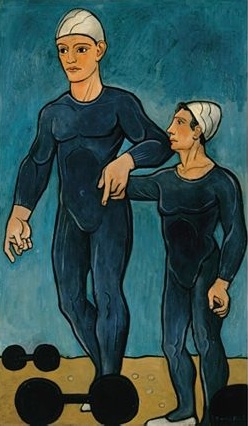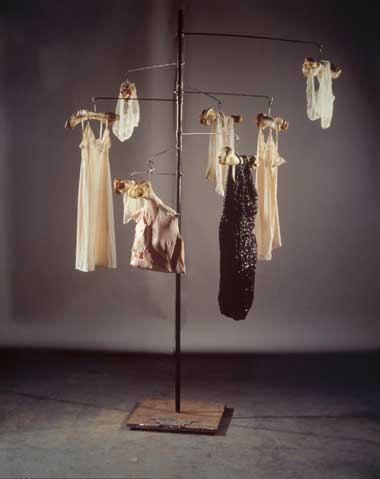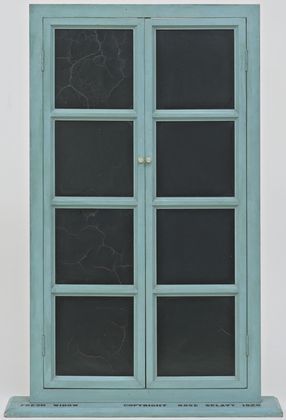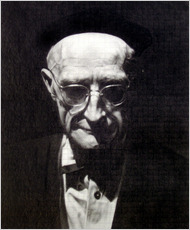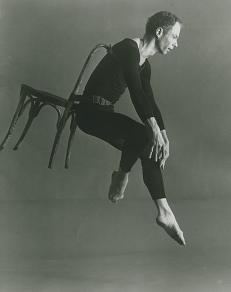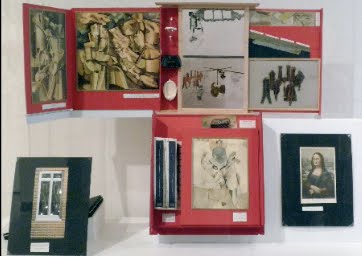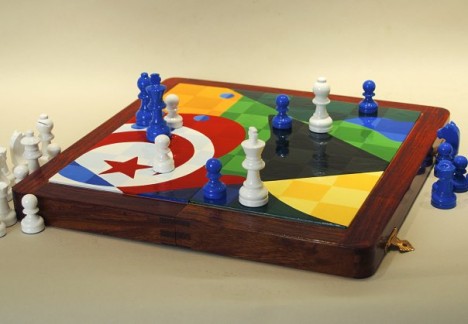Duchampian News & Views
-
Picabia Brings Top Price at Auction
December 16, 2009A rarely seen 1935 painting by Francis Picabia led the way at an unexpectedly strong auction of impressionist and modern art at Sotheby’s Paris, fetching over 700,000 euros. Three other works by Picabia, including Tournez Rare (ou Sirenes), briefly owned by Marcel Duchamp, sold, as did paintings and sculpture from Man Ray, Picasso and others.
-
Louise Bourgeois, the Web & the Wheel
December 15, 2009 While Louise Bourgeois knew Miro, Ernst and other members of the Surrealist circle, her work is its own territory and must be approached on its own mordant terms. But as the recent documentary Louise Bourgeois: The Spider, the Mistress and the Tangerine demonstrates, elements of her sculpture bear a family resemblance to Duchamp's -- as when, for example, the plates from her book He Disappeared Into Complete Silence (1947) reflect the figures in the Large Glass, or when a mus.. read more... -
“Fresh Widow,” or the Postwar Paradox
December 14, 2009 While often dismissed as simply an exercise in metaphysical punnery, the perpetually blackened eyes of Fresh Widow become somber when considered as both a memorial of and a barrier against the chaos of World War I, which left 1.4 million French citizens dead and hundreds of thousands of widows in its wake. In this context, Duchamp's instructions that the blind leather panes be polished every morning (to keep the widow "fresh") become both poignant and perverse: the memory so .. read more... -
Music for Marcel Duchamp
December 14, 2009John Cage’s 1947 “Music for Marcel Duchamp” (Sonata XIII) extracted from its original visual context –part of the soundtrack for Hans Richter’s Dreams That Money Can Buy — and set against the urban Chilean nightscape.
-
Retro-Appropriating the Photographic Image
December 11, 2009 In what's been called a campaign of "retro-appropriation," Brooklyn artist Dan Fischer minutely reproduces his favorite photographs in pencil, working over a chessboard-like grid that lets him abstract the images from their iconic personal and cultural context. The resulting texture is often described in terms reminiscent of Spanish devotional portraiture -- "velvety," "monkish," and above all "hagiographic" -- subverting the notion that in an era of theoretically infinitely .. read more... -
Children of Mutt
December 10, 2009 The recycled provenance of Fountain and other objects associated with Marcel Duchamp exerts considerable theoretical influence over contemporary artists who incorporate found or discarded materials into their work. But is personal authorship the factor that derives art from trash or, as sculptor/curator Pat Buckohr puts it, something from nothing? Duchamp argued that all creative acts are collaborations, and so the true parentage of a work of art is always in some sense compl.. read more... -
“Cage & Cunningham” in Wisconsin
December 9, 2009 The long partnership between John Cage (1912-1992) and Merce Cunningham (1919-2009) generated a rich body of work and relationships through endless experimentation, paradox, and chance encounters like Cage's 1942 meeting with Marcel Duchamp. Cage, reportedly, was crying, having had a fight with Peggy Guggenheim. Duchamp was smoking his omnipresent cigar.The Madison Museum of Contemporary Art is now holding a retrospective of Cage and Cunningham's artistic milieu and legacy, b.. read more... -
Opening Up The Red Valise
December 8, 2009 As part of a year-long ambit through the Portland Art Museum, Oregon-based bloggers LaValle and Amy are taking an extended look at the 1960 ("red") copy of Boite-en-valise housed there. The process of "unpacking" Duchamp's miniature retrospective has prompted discussion of Rrose Selavy's nebulous co-authorship of two of the works on display, personal reflections on the seductions of chess, and a satisfyingly dense array of portraits, links to audio and video, and, of course, .. read more... -
The Art of Chess: Duchamp + Matisse
December 7, 2009 The recent reprise of "Marcel Duchamp: The Art of Chess" at Art Basel Miami Beach provided another opportunity to reflect on the hand-painted chess sets of Sophie Matisse (b. 1965) in the context of her step-grandfather Duchamp's lifelong pursuit of the game. Most of the attention paid so far to these gameboards (which have also been exhibited separately) has focused on the way they use fields of pure color to liberate the black-and-white grid of the chess player's universe -.. read more...




